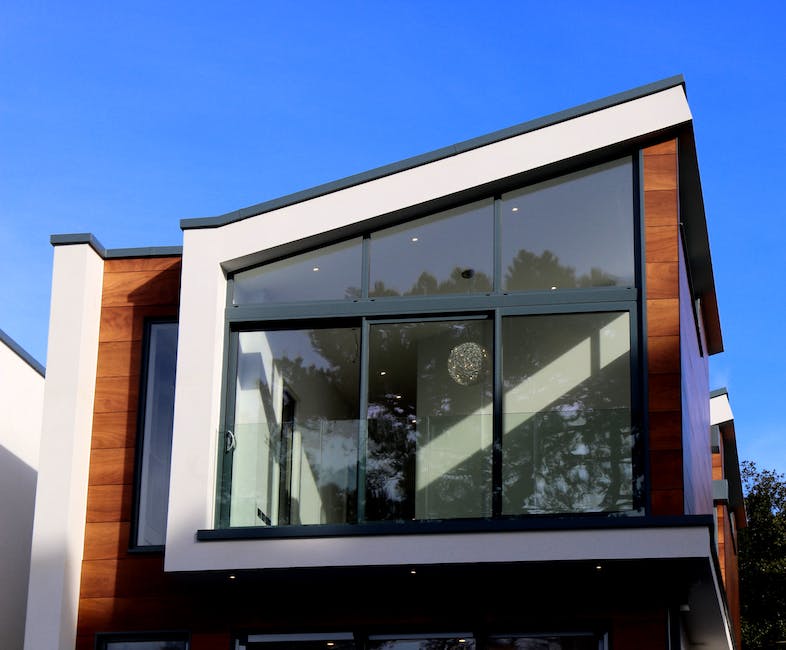Roofing is a significant investment, and it's crucial to understand the various financial strategies and options available to make this undertaking more manageable. From insurance to loans and grants, we'll dive into the different ways you can finance your new roof.
Learn how to pay for new roof. Explore options from personal loans to contractor financing and decide on the best way to finance your new roof.
Insurance Coverage
The first place to look for financial assistance when replacing your roof is your homeowner's insurance policy. In many cases, insurance companies cover damages caused by unavoidable accidents or natural disasters. It's essential to review your policy and consult with your insurance company to understand what's covered and under what conditions.
Roofing Loans
If insurance isn't an option, or if it doesn't cover the full cost, a roofing loan is another viable route. Many financial institutions offer loans specifically designed for home improvements. These loans often come with low interest rates and flexible repayment terms, making them an attractive option for homeowners.
Federal Housing Administration (FHA) Loans
The FHA provides two types of loans that can help homeowners with roofing costs: the Title I Property Improvement Loan and the 203(k) Rehabilitation Mortgage. The Title I loan is designed for minor to moderate repairs and improvements, while the 203(k) loan is intended for extensive repairs and renovations.
Home Equity Line Of Credit (HELOC)
A HELOC allows homeowners to borrow against the equity of their homes. It works much like a credit card, with a limit based on the home's value, the outstanding mortgage balance, and the lender's maximum loan-to-value ratio. This option can be ideal for homeowners with substantial equity in their homes.
Grants And Assistance Programs
Numerous federal, state, and local programs offer grants and assistance for home repairs and improvements. For instance, the U.S. Department of Agriculture offers a Rural Repair and Rehabilitation grant for eligible rural homeowners. It's worth exploring these programs, as they can significantly offset the cost of a new roof.
Roofing Company Financing
Many roofing companies offer financing options to their customers. These can range from zero-interest promotional periods to long-term financing deals. It's essential to carefully review the terms and conditions of these agreements, ensuring they align with your financial situation and budget.
Credit Cards
Although not the most cost-effective method, credit cards can be a last-resort option for financing a new roof. Some homeowners may choose to use a card with a zero-interest promotional period to finance the roof, planning to pay off the balance before the interest kicks in.
Saving And Budgeting
While it may take longer, saving for a new roof can be the most cost-effective option. It allows you to avoid interest charges and loan fees. Setting aside a portion of your income each month can help you accumulate the necessary funds over time.
FHA 203(k) Loan
The FHA 203(k) loan is a unique financial product insured by the Federal Housing Administration (FHA) that allows homeowners to finance both the purchase of a home and the cost of its rehabilitation, or the refinancing of a home and the cost of its rehabilitation, in a single mortgage. The FHA 203(k) loan is a powerful tool for homeowners who need to make improvements to their homes but may not have immediate access to the necessary funds.
This type of loan is a valuable asset for homeowners considering significant renovations, as it allows them to borrow up to the projected value of the home after improvements, minus the current mortgage balance. However, these loans do require a minimum credit score of 500 and, like other loan options, come with their own set of terms and conditions that should be fully understood before proceeding.
Personal Loans
Personal loans are a flexible financing option that can be used for a variety of purposes, including home improvements. Issued by banks, credit unions, and online lenders, these loans don't require collateral, making them an attractive option for homeowners who don't want to put their home at risk.
The maximum amount you can borrow with a personal loan varies by lender but can be up to $100,000. Interest rates on these loans are typically higher than those for home equity products due to the unsecured nature of the loan. The approval process for personal loans is usually faster than for home equity loans or lines of credit, often within a few days.
Contractor Financing
Some roofing contractors offer their own financing options. This can be a convenient option as you can arrange both the work and the financing in one place. However, it's important to carefully review the terms of contractor financing. Interest rates can sometimes be higher than other financing options. Always compare contractor financing with other available options to ensure you're getting the best deal.
Frequently Asked Questions
To provide a better understanding of how to pay for new roof and clear any ambiguities, we have answered some of the more commonly asked questions.
Can I finance a roof with bad credit?
Yes, there are options available for financing a roof even with bad credit. However, you may face higher interest rates and less favorable terms than someone with good credit.
Can I use a credit card to finance my new roof?
Yes, you can use a credit card to finance your new roof. However, this option should be used cautiously as credit cards often come with high interest rates. This could make your roof much more expensive in the long run if you can't pay off the balance quickly.
What is the best way to finance a new roof?
The best way to finance a new roof depends on your specific financial situation and needs. It's important to consider all your options and choose the one that offers the best terms and rates for your situation. It may be beneficial to consult with a financial advisor to help you make the best decision.
Understanding How To Pay For New Roof
Replacing a roof is a significant financial endeavor, but numerous options can make it more manageable. Whether it's through insurance, loans, grants, or savings, it's possible to find an affordable way to pay for a new roof. Always remember to review all options for how to pay for new roof and consult with financial advisors or professionals to make the best decision for your specific situation.
Discover more assistance programs by exploring our helpful guides and resources. Visit Gov Relations and check out our guide on free roof replacement grants for low-income families.







